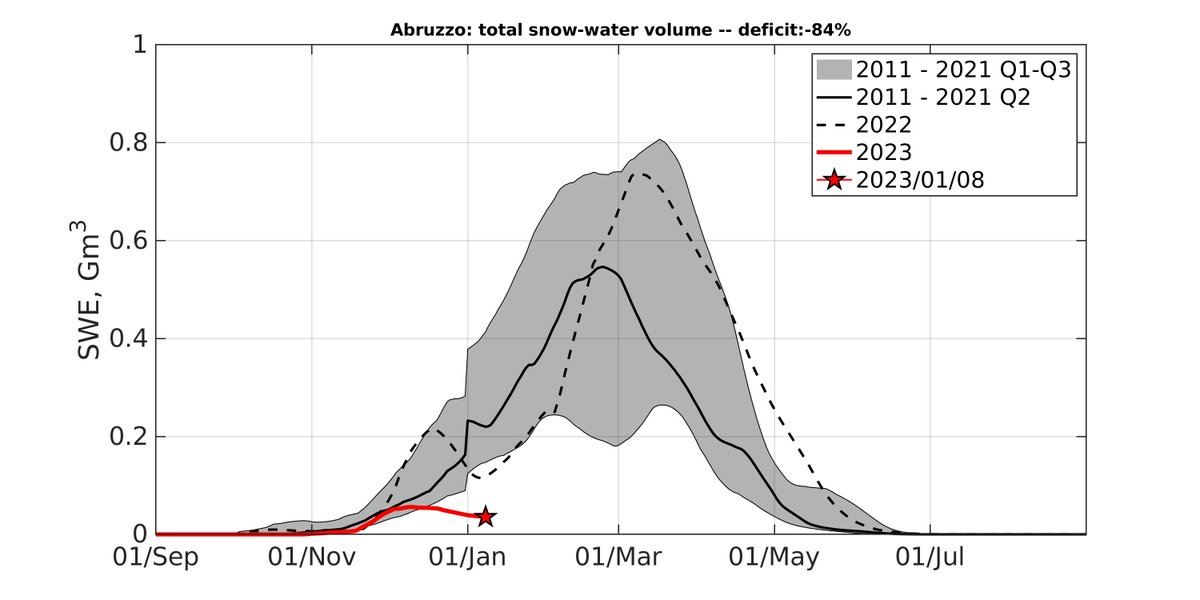
Italy is facing another severe deficit in #snow water resources in 2023. We all see landscapes with scarce snow, but we also know that snow accumulation can change significantly from one year to the others. So, how serious is the situation at the moment?
Thread below! 🧵👇
Thread below! 🧵👇
There are two variables we should keep in mind when thinking about snow: snow extent (where?) and snow depth (how much?). By feeding physical models with satellite images, IT-SNOW provides both information in real time. Thus, how much water in snow are we missing at the moment?
According to our estimates, we are currently missing about 69% of water from snow at national scale. In other words: we are experiencing a larger deficit than last year, which was already an historical drought year. 

Across the Italian Alps, we have about 1/3 of water in snow compared to recent years. Why? Besides low precipitation, December 2022 was very warm. As a result, our real-time tools show that snow started melting in mid-December – well before spring and so much earlier than usual! 

Last year, the Apennines experienced deep snowpacks, which means that the snow drought mostly affected northern Italy. Is the situation the same this year? Not at all: our models show that, this year, central Italy is even more affected than the Italian Alps (-84% in Abruzzo). 

All in all, we can estimate that Italy is missing 4 billion cubic meters of water in snow at the moment (similar to 16% of Lago Maggiore in northern Italy). Little snow in winter = less water in spring and summer, when demand peaks! 🔜New updates on the snow drought monitoring!
• • •
Missing some Tweet in this thread? You can try to
force a refresh






